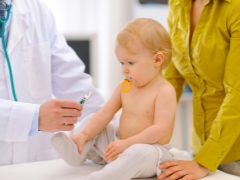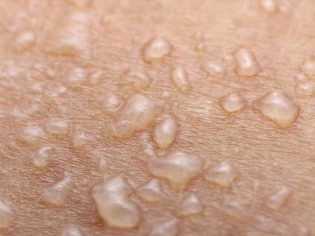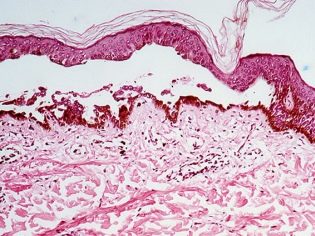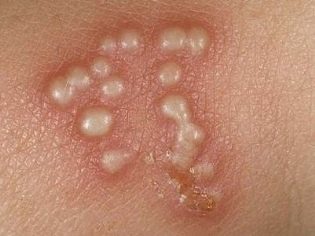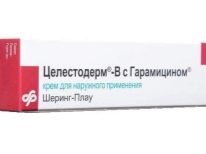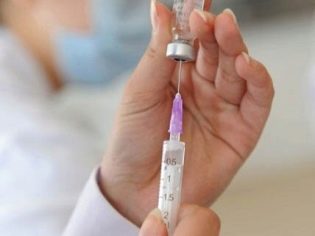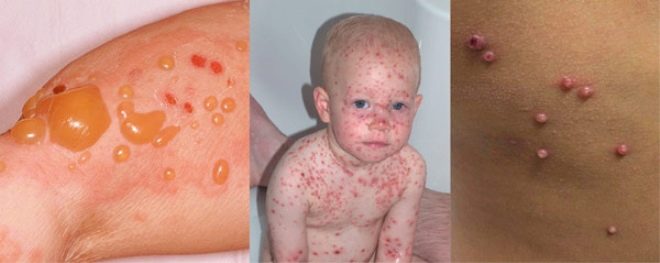Bubbly in children, babies and newborns
There are such diseases, about which little even experienced doctors can tell, since the true nature of their occurrence is not fully understood, scientists have yet to understand what is really happening with the child. These diseases include pemphigus. Of course, this is a very serious illness, but parents should not take this diagnosis as a sentence. Not every bladderwatch threatens to death. More about this ailment and how to deal with it, we will tell in this article.
What it is?
Pemphigus is a rare and dangerous disease. It is based on poorly understood mechanisms. autoimmune attack on the skin. Under the influence of some factors that are not yet obvious to science, the immune system begins to produce antibodies to substances that ensure the integrity of the skin. They actually “glue” epithelial cells together. If these “adhesive” substances are destroyed, ulcers appear on the skin and mucous membranes, which are regularly infected with bacteria like streptococcus or Staphylococcus aureus.
The more official name of the disease is pemphigus. Until the middle of the twentieth century, pemphigus was called any disease in which blisters or blisters appear on the skin. However, the main distinctive features of pemphigus were then formulated - the presence in the blood of those most destructive antibodies. And diseases associated with the occurrence of bubbles are now divided into a true pemphigus - pemphigus and other pemphigus, for which this name has remained largely only among the people and by habit.
Bubble can strike a person of any age and gender. It is most dangerous for infants, in whom local immunity is practically not formed. But for older children, the disease poses a real threat. First, pemphigus prone to progression. Secondly, a child with extensive skin lesions is rapidly losing fluid and protein. Thirdly, the risk of infection is extremely high, bacteria and fungi can cause sepsis.
Pediatricians have not yet calculated how many children are infected with pemphigus annually, but in adults this number is at the level of 2 new cases per 1 million population per year. The most dangerous disease occurs in countries and regions with a hot climate.
Kinds
True pemphigus (pemphigus) can be:
- ordinary (vulgar);
- vegetative;
- leaf-shaped;
- erythematous;
- seborrheic.
The vulgar form of the disease is the most common. On the skin, which visually is intact, intact, bubbles appear, filled with serous fluid. They burst fairly easily and heal quickly. Most often, the first blisters appear in the mouth, on the mucous membrane of the lips, in the area of the nasolabial triangle.
These bubbles that may seem harmless at first, appear more and more extensive over time, spreading throughout the body, after they burst, pink eczema remains. If within six months - two years the child does not begin to receive adequate treatment, death is possible. The vegetative form of the disease begins, as well as the ordinary one, with the appearance of scattered single bubbles. However, after they burst, not pink eczema, but grayish papillomas (vegetations), which are prone to growth, remain on the child's skin.
The leaf-like form of the disease is named for the appearance of crusts, which are formed after the characteristic bubbles begin to burst. The peculiarity of the disease lies in the fact that it develops rapidly, about any months of slow progress, as in the case of the usual pemphigus, there is no talk. Crusts are formed large, and they exfoliate in large pieces, like leaves. The erythematous pemphigus often joins this form. By and large, doctors do not make a big difference between them, since the manifestations and predictions are similar.
Seborrheic form of the disease begins in the scalp, from the face. Small bubbles quickly turn into a yellowish crust (as with seborrhea, hence the name of the form). The disease progresses slowly, gradually the blisters begin to appear on the back, abdomen, limbs. When removing the yellowish-brown crust exposed moist eczema.
There are other forms of pemphigus, more common. However, they fell out of the general classification after specifying the diagnosis of pemphigus. But as long as they are called pemphigus, they can not be said. It:
- viral infectious pemphigus;
- syphilitic congenital pemphigus.
Virus pemphigus, which is also called infectious, is caused by certain pathogens - the Coxsackie virus (a well-defined subtype of it), as well as enterovirus 71 subspecies. Enterovirus disease can take a grand scale and become epidemic. In children, the viral form of the disease is manifested mainly on the feet and palms, although the appearance of vesicles on the genitals and on the pope is not excluded.
Syphilitic pemphigus - external manifestation of intrauterine infection with syphilis. Children with congenital syphilis can blister with serous contents a few days after their birth. In this case, the blisters will quickly open, leaving a pinkish weeping eczema. For the last two forms, doctors often use the concept of "symptom" since both conditions are only symptoms of another, underlying disease.
This greatly facilitates the task of the treating doctor, who will first undertake the treatment of the underlying disease. With true pemphigus, this is precisely what is difficult, because the true cause often remains unknown.
The most prominent by clinical signs is para-tumor pemphigus, which refers to the true. In 60% of cases, it accompanies such serious diseases as leukemia, lymphoma. Sometimes the appearance of characteristic skin manifestations indicates the beginning of a malignant formation and precedes it.
The reasons
As already mentioned, the start of the disease coincides with the process of the development of autoimmune aggressive antibodies to desmoglein proteins. It is these proteins that are the very "gluing" basis that provides the connection of epidermal cells with each other. Proteins are destroyed, the integrity of the skin suffers. And bacteria, of which around in abundance, getting into the exfoliated skin, cause the appearance of bubbles.
What factors can trigger such a pathological process, medicine is still not entirely clear. The main reason is still considered a genetic factor, a predisposition to the occurrence of such an autoimmune process. Disturbances in the central nervous system are also rather seriously considered as possible factors provoking the appearance of pemphigus. An infection, virus or other pathogen can also theoretically trigger the onset of the disease, but science does not yet know what kind of a virus this may be. There is some connection between the development of pemphigus and infection with endogenous bacteria.
In the clinical guidelines of the Ministry of Health of Russia from 2016, the following factors are indicated as possible factors provoking an inadequate immune response:
- medication of the thiol group (penicillamine, captopril, cephalosporin group antibiotics, immunomodulators);
- burns;
- herpes viruses 1,2 and 8 types;
- physical contact with pesticides;
- severe stress experienced by the child.
The official statement by the Ministry of Health that some foods that are rich in tannin (leeks, mangoes, raspberries, rosemary, vanilla, cherry, ginger, tea, and even the most common garlic) can also cause blistering sounds quite unusual.
To identify the real cause of the disease can not always. The presence of aggressive antibodies in the body is confirmed laboratory, but it is very rare to establish the cause of their appearance.
Symptoms
Bubble in the early stages may not cause any concerns. The child feels well and there are no changes other than a few small bubbles on the skin. The deterioration of the condition develops consistently and gradually, as the area of the affected skin increases.
Bubbles are characterized by so-called lethargy, they are fairly easy to open, the skin sags slightly above the liquid contents. The first eruptions in the pemphigus are most often localized precisely in the region of the oral cavity - on the mucous membranes or around the lips. Blisters are quite painful.
After the blisters open, dense crusts or long-lasting wet eczemas form in their place. The area of the lesion is increasing, with the accession of bacterial infections, local inflammation, inflammatory foci appear, after which erosion and eczema remain even larger. This disease is characterized by the absence of epithelialization of tissues after a bubble has broken through. Gradually, erosion is expanding, merging with each other.
Signs of all forms of the disease, without exception, appear in waves. And if you do not pay attention to them in time, intoxication, headaches, nausea will be added to the symptoms. Pemphigus can cause patient death.
Diagnostics
Since the disease is quite rare, pediatricians sometimes reasonably find it difficult to make a diagnosis. In order not to confuse anything, it is first recommended to find differences from other dermatological diseases, which are also accompanied by the appearance of blisters and blisters.
To do this, use the method, which is called the sample of Nikolsky. The doctor gently rubs the skin of the child near the bladder and at a distance from it, and also lightly presses the blister with the pad of his finger. The test is considered positive if there are signs of skin splitting:
- when pressed, serous fluid spreads into the adjacent layers of the skin;
- if it is easy to pull the skin over the blister, it is easy to exfoliate in the form of a tape, like after a sunburn;
- when rubbing on a healthy area of skin, a mixture of the upper layer of the epidermis is visible.
A blood test for the content of antibodies to desmogleins proteins is always assigned. Their presence indicates the development of pemphigus. In some cases, the doctor may take samples of serous fluid from the blisters, from the bottom of erosion, and also prescribe additional cytological and general examinations (urine, blood).
Sometimes there is a need to make an x-ray of the thoracic department, and also to appoint consultations with related specialists - a cardiologist, a nephrologist, an infectious diseases specialist.
Treatment
In the treatment of pemphigus, the most important thing is to prevent the emergence of new blisters and erosion, to achieve the healing of the existing affected skin. The main drugs in the treatment of pemphigus are glucocorticosteroids. As soon as the diagnosis is confirmed laboratory, regardless of the age of the baby, he is prescribed a course of systemic glucocorticosteroid drugs.
The drugs are administered in higher dosages. This reduces the intensity of the formation of new bubbles and begin the process of restoring existing erosion.It usually takes about two weeks, after which the child is kept for a rather long time on hormone maintenance therapy, administering the same drug, but only in small doses.
The drug showed itself most effectively. «Prednisolone». When vulgar pemphigus it is administered in large doses than when leaf-like. Then the amount of the drug is systematically reduced until it comes to a maintenance dose. Unfortunately, for the vast majority of patients, such treatment will last for a lifetime, «Prednisolone» need to prick every day.
Simultaneously with the hormones, the doctor prescribes calcium supplements to the child, vitamin D. To increase the effectiveness of treatment, immunosuppressive drugs are prescribed from the first days, which artificially inhibit the activity of the immune system. These tools in pediatric practice include:
- "BUTzathioprine;
- Mielosan;
- "Cyclophosphamide";
- "Cyclophosphamide".
At the earliest stages of treatment, a child may be prescribed procedures that allow at least for a while to “clear” the blood of a large number of aggressive antibodies. Such procedures include hemodialysis and plasmapheresis. To reduce the risk of infection, the child is prescribed to treat the skin (affected areas) with ointments with corticosteroids, antiseptics.
Parents should clearly understand that treatment for pemphigus is likely to be lifelong. In rare cases, with short breaks from relapse to relapse.
Baby care
Children diagnosed with pemphigus require special treatment and more attentive everyday care. How parents organize the life of the baby depends on how much such a child can live. It is important to ensure that after discharge from the hospital, where the initial stage of treatment takes place, the baby continues to take all the drugs prescribed by the doctor at home.
Mom or dad will have to learn how to make injections, because every day using paid medical services at home is destructive for the family budget.
Every day, the child will need to treat eczema and blisters on the skin. For this, it is recommended to use aniline dyes (fucorcide, zelenka), since they have a rather high efficacy against various microbes, and especially against staphylococcus. It is recommended to apply ointment with corticosteroids on erosion and crusts formed on the skin. Usually prescribed "Celestoderm" together with "Garamicin" or «Hyoxyson». Often used dermatol ointment with a concentration of the active substance of 5%.
If signs of infection appear - pus, inflammation, swelling, be sure to use when processing ointment with antibiotics («Baneocin», «Levomekol»). If the affected areas are extensive, then it is best to protect them from possible additional injury with a sterile dressing. Dressings should be done at least twice a day. In dressings there is a sense and with small lesions, if the child is very active and mobile.
When complaining of pain, it is sometimes allowed to give the child anti-inflammatory drugs. Ibuprofen or "Paracetamol"from reception "Analgin" and better to give up. If anesthesia cannot be achieved, the consultation of a doctor who will give a prescription for analgesics that are approved for use in children is necessary. If new elements of the pemphigus and subsequent erosion appear in the mouth, care should be taken that the child rinsing the mouth several times with antiseptic solutions.
Baby will benefit bath, in which parents add solutions of antiseptics, for example, chlorhexidine. It is desirable that the child takes vitamin-mineral complexes, which contain folic acid, vitamin E, calcium and magnesium. Make changes have in the diet of the child. The baby should eat in small portions and fractionally (up to 6 times per day).This is especially important if the pemphigus struck mucous membranes in the mouth, in the esophagus. If the baby is not given soups, mashed potatoes and mush, which are relatively easy to eat, then he may even refuse to eat because of pain, and then have to feed him through the probe. The diet of the child with pemphigus should be based on the rejection of salty, salt should be completely excluded from the recipe of all dishes, however, the baby will need a large amount of protein foods.
The child will have to stand at the dispensary with a dermatologist in the clinic at the place of residence. This specialist will need to appear every six months, and when a relapse occurs and the condition worsens, it is unscheduled. As a rule, dispensary registration is life-long, as is therapy.
Many vaccinations for a child who takes drugs to suppress the activity of the immune system are contraindicated. But parents, if desired, will be able to make the baby a flu and pneumococcal vaccine. A baby with pemphigus needs to sunbathe with caution, swim. This can be done only in a state of remission - when there is no fresh eczema and blisters on the skin. In most cases, children with severe forms of the disease are at home, in some cases they receive the status of a disabled child.
On the mental and intellectual development of the child pemphigus does not affect, the child may well be engaged in any kind of mental work. Categorically contact with any allergens and toxic substances should be limited, household chemicals, to prevent traumatic situations in which the baby can get burned or wounded. You should also avoid acute respiratory viral infections.
In periods of a massive rise in the incidence of ARVI, a child with pemphigus is best not to go to crowded places, not to go to shops and clinics.
Forecasts
The prognosis for pemphigus is considered conditionally unfavorable. Even if the treatment was started on time, the drugs were correctly and correctly prescribed, unfortunately, this does not cancel the probability of death. The disease is always in any form considered chronic. Before the treatment of the disease began to use hormonal agents, in particular, glucocorticosteroids, the probability of death in pemphigus was close to 65%. Now the risk of such adverse events is estimated by experts at 6.5-7%.
Without continuous maintenance therapy, approximately 9% of patients with such a diagnosis will experience sustained remission, that is, all signs of the disease are absent. In the remaining 91% of patients without treatment, an exacerbation occurs, which leads to a significant deterioration of the condition, and consequently, increases the likelihood of death.
Prevention
Since the causes of the disease are not fully understood, there is no specific prevention of pemphigus. The only thing that parents can and should do is to pay maximum attention to the formation of a healthy and strong immunity. It is necessary to do this from the very birth of a baby, practicing hardening, walking, eating right, as well as refusal from frequent and unreasonable use of various medicines.
At first suspicion of this dangerous disease you need to immediately consult a dermatologist.
You should not try to cure the pemphigus at home, it is impossible. In order not to overlook the signs of the disease, it is important to carefully examine all skin problems with a specialist.
A rash in childhood is usually not dangerous, most often caused by allergies or infectious diseases. The most important thing parents need to know is: what kind of rash carries a real threat to the child’s life and when should you seek medical help? About this in our next video.
